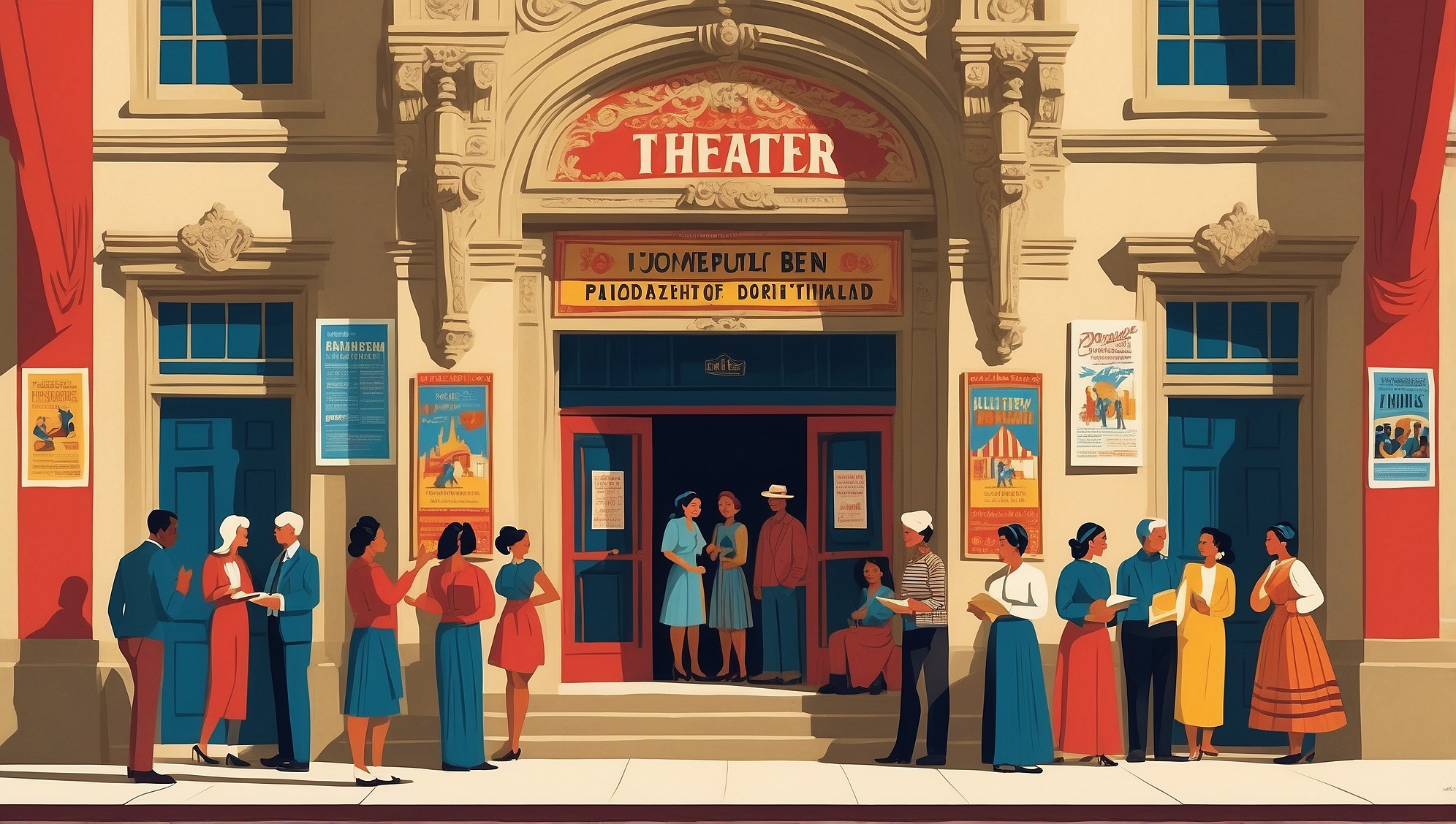Local theaters play a critical role in preserving cultural heritage by acting as living archives of art, history, and traditions. Through their performances, programming, and community engagement, they ensure that the stories, values, and customs of diverse cultures remain relevant and accessible to future generations. Iowa’s Creative Corridor, rich with artistic expression, benefits from these efforts as local theaters showcase how cultural heritage can be celebrated and sustained.
Showcasing Local History Through Productions
Many theaters incorporate stories rooted in local history to connect audiences with their regional identity. By staging plays and musicals based on historical events or notable figures, they bring the past to life in a way that textbooks cannot. Productions that focus on Iowa’s agricultural legacy, the Underground Railroad, or contributions to the arts ensure that local narratives remain a vibrant part of cultural memory.
- Examples of Local Stories:
- Historical reenactments of Iowa pioneers.
- Adaptations of novels by Iowa-born authors like Marilynne Robinson.
- Plays highlighting the contributions of Indigenous communities in Iowa.
Supporting Regional Talent
Theaters often act as incubators for local talent, providing actors, playwrights, and directors with a platform to showcase their work. This emphasis on homegrown creativity strengthens cultural identity while fostering pride within the community. By investing in regional talent, theaters ensure the continuation of unique artistic expressions.
- Ways Theaters Support Talent:
- Hosting playwright competitions to encourage new work.
- Offering workshops and mentorship programs.
- Partnering with schools to nurture young performers.
Preserving Traditional Art Forms
Local theaters contribute to cultural preservation by staging traditional art forms that might otherwise fade from public consciousness. Whether through folk music, dance, or storytelling, these performances honor the cultural practices of various communities.
- Examples of Traditional Programming:
- Annual folk festivals featuring music and dance.
- Performances incorporating traditional storytelling techniques.
- Revivals of classic plays written in or about the region.
Community Engagement and Education
Local theaters extend their influence beyond the stage by engaging with communities through educational programs. From hosting workshops to partnering with schools, theaters ensure that cultural heritage is accessible to younger generations.
- Key Educational Initiatives:
- School matinee performances tailored to local history.
- Public lectures on the cultural significance of upcoming productions.
- Hands-on theater camps teaching traditional performance techniques.
Providing a Platform for Diverse Voices
Theaters serve as a platform for underrepresented communities to share their stories and traditions. By giving voice to diverse perspectives, they enrich the cultural fabric of the region and promote inclusivity.
- Examples of Amplifying Diverse Voices:
- Hosting cultural festivals celebrating different ethnic groups.
- Collaborating with local artists to create works addressing contemporary issues.
- Producing plays by marginalized writers or focusing on untold stories.
Collaborations with Cultural Organizations
Partnerships between theaters and local cultural organizations amplify efforts to preserve heritage. Whether through co-hosted events, shared resources, or collaborative productions, these relationships strengthen the impact of cultural preservation initiatives.
- Notable Collaborations:
- Working with historical societies to ensure accuracy in productions.
- Partnering with museums to offer immersive experiences.
- Coordinating with local libraries for play-reading series.
Using Modern Tools to Archive Heritage
While theaters focus on live performances, many also use technology to document and share their work. Recording productions, creating digital archives, and livestreaming performances allow for broader access and ensure that cultural heritage is preserved for future study.
- Digital Preservation Efforts:
- Filming performances for archival purposes.
- Maintaining an online repository of past productions.
- Offering virtual access to local performances for remote audiences.
Encouraging Community Participation
Community involvement is key to preserving cultural heritage, and theaters achieve this by encouraging participation in various forms. Volunteer opportunities, open auditions, and community-centric events foster a sense of ownership among locals.
- Forms of Participation:
- Encouraging local residents to audition for roles.
- Inviting community members to assist with set design or costumes.
- Hosting town hall discussions about cultural representation in the arts.
Revitalizing Historic Venues
Theaters housed in historic buildings contribute to the preservation of architectural heritage. Renovating and maintaining these spaces not only keeps history alive but also creates a tangible connection to the past for audiences.
- Examples of Venue Revitalization:
- Restoring century-old theaters to their former glory.
- Preserving architectural details like original marquees and interiors.
- Using these spaces for tours or historical exhibitions.
Promoting Accessibility
Making theater accessible ensures that cultural heritage reaches a wider audience. Subsidized ticket programs, sensory-friendly performances, and multilingual productions remove barriers to participation.
- Steps Toward Accessibility:
- Offering discounted tickets to low-income families.
- Hosting performances tailored for neurodiverse individuals.
- Providing translations or subtitles for productions in different languages.
Local theaters are vital to the preservation and celebration of cultural heritage. By producing historically significant works, supporting regional talent, engaging communities, and maintaining accessibility, they keep traditions alive while fostering a deeper understanding of cultural identity. Iowa’s Creative Corridor exemplifies how theaters can serve as cultural stewards, ensuring that the richness of local heritage continues to inspire and educate for generations to come.
